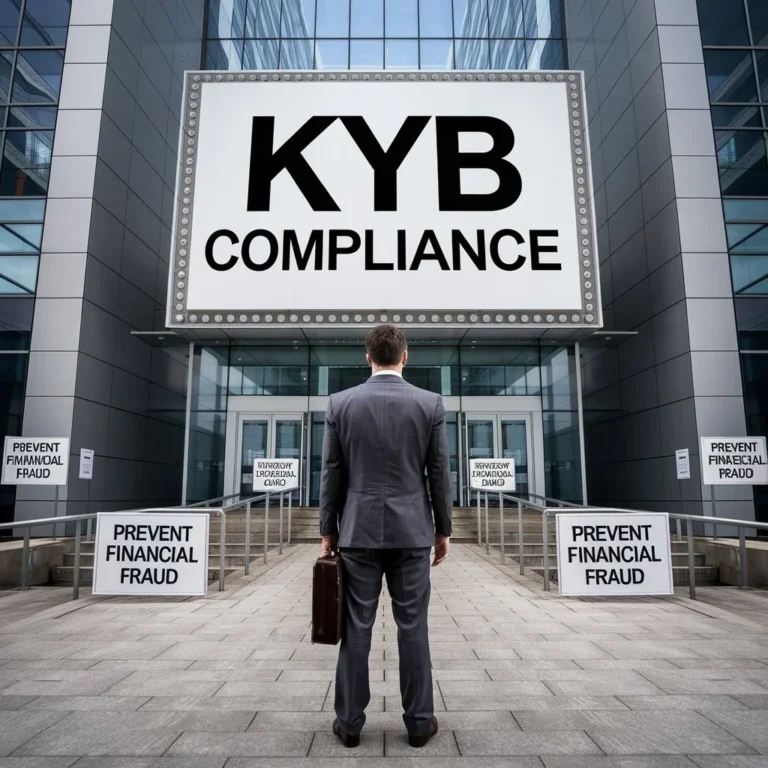Financial fraud is becoming increasingly common in the corporate world, and thus, business screening is crucial to deter these threats. According to the research, consumers have reported losing more than $10 billion to fraud in the fiscal year 2023. This has marked the first time that fraud losses have reached that benchmark in decades. This marks a 14% increase over reported losses in 2022, which is the highest up to date.
Thus, this hefty number highlights a stringent need for business screening to prevent fraudulent activities and the threat of losing sensitive data. It is prevalent in informing about the risk beforehand and conducting stringent verifications of the company and its executives. The companies are encouraged to build more trust and meet the strong KYB standards to comply with regulatory requirements.
This article will provide an in-depth analysis of the regulatory term business screening. It will also discuss how it is done and what factors are involved. Lastly, the ultimate benefits of company verification will be explained, along with how it is optimal for fraud prevention while integrating AI.
Business Screening Comprehending the Concept
Business screening involves verifying the legitimacy and credibility of a company before entering into any partnership or financial transaction with them. Ensuring compliance with regulations such as anti-money laundering (AML) and Know Your Customer (KYC) requirements is crucial for this process. Business screening often includes the identification of the Ultimate Beneficial Owner (UBO), which is solely the examination of ownership structures. Then it will also authenticate the financial standing and assess the risk profiles.
Organizations mitigate risks such as fraud, money laundering, or reputational damages by conducting thorough screenings. It ensures a secure and compliant business environment through adherence to these stringent protocols.
The Ultimate Business Verification Process
The business screening process ensures compliance and transparency when engaging with other businesses. Here are the essential steps involved in the optimal procedure:
| Step | Description |
| Collect Business Information | It starts by gathering critical details like the company’s name, registration number, and where it’s based i.e. the location. |
| Verify Legal Existence | Then, it confirms that the company actually exists by checking official records and documents. |
| Identify the UBO | Further, it digs into the ownership structure to find out who really controls the company. |
| Conduct Risk Assessment | Moreover, it reviews their financial history and legal records, and checks for any high-risk activities or locations where they operate. |
| Regulatory Compliance | Then, it makes sure the business complies with necessary regulations like AML and KYB. |
| Verify Financial Health | The verification providers then assess their financial stability by assessing credit scores, revenue, and any outstanding debt. |
| Ongoing Monitoring | Lastly, it keeps track of any changes in ownership, compliance status, or risk factors over time. |
KYB Checks— What Documents Are Involved and Why?
KYB checks require specific documents to verify a company’s legitimacy and ensure regulatory compliance for business screening. These documents help ensure transparency and reduce risks to a certain level. They are also used to meet global compliance standards by verifying the authenticity of business entities. That includes:
- Company Registration Documents
- Ownership Structure
- Financial Records
- Proof of Address
- Compliance Documents
AI Integration in Business Verification for Fraud Prevention
Artificial Intelligence (AI) and Machine Learning (ML) are revolutionizing business verification by improving fraud prevention. These technologies offer real-time analysis of vast datasets. They identify continuous patterns and anomalies that may indicate fraudulent activities beforehand. AI-driven tools are capable of automating the validation of company information, ownership arrangements, and financial documents. However, ML models continuously improve their accuracy by learning from past data and detecting the similarities in suspicious activities.
This incorporation speeds up risk evaluations and improves adherence to regulations such as AML (Anti-Money Laundering). They are optimal in reducing human error by computerizing the process. Companies and financial institutions can effectively detect fraud by incorporating AI and ML into the business screening processes. They can also prevent high-risk transactions and ensure more secure and transparent business operations with the revolutionized technology.
Advantage of Verification Before Business Onboarding
Company verification before business onboarding offers several advantages that enhance security and trust in business relationships.
- It reduces the chances of fraud and loss in financial transactions, it checks the authenticity of potential partners.
- It ensures that it is operating based on regulatory standards. Therefore, it reduces legal risks and liabilities.
- These aspects positively help the business create trust and credibility with clients and stakeholders; therefore, they further build up the reputation of the business.
- The verification streamlines the process of onboarding because early identification of potential issues then saves time and resources.
- As it improves decision-making by providing accurate information on the business’s financial health and ownership structure.
- Further, it facilitates ongoing monitoring, allowing for timely updates on any changes in risk status or compliance.
What The Future Holds?
The future trend for business screening will be to continue remaining heavily reliant on AI and machine learning technologies. This will lead to the introduction of accuracy and efficiency in the detection of fraud. As the regulatory frameworks evolve, verification processes will be completely integrated into business models. This is because verifying a borrower’s identity could be a factor in compliance and risk reduction between merchants and consumers.
Lastly, businesses will focus on continuously monitoring the nature of the markets and emerging threats that they can determine. Ultimately, robust verification practices will nurture trust, transparency, and safer business environments that will make the way for sustainable growth and collaboration.
